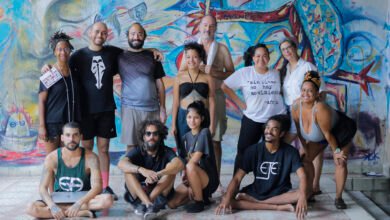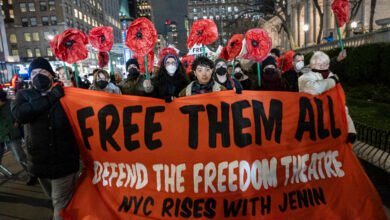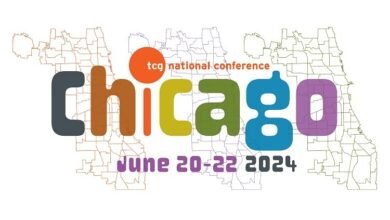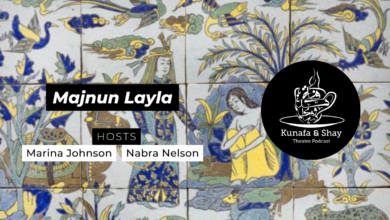The Amateur Botanist Talks Merrily Into the Night: Some Notes on Neurodivergent Performance (and How to Make It)

1
When we’re talking about theatre, the dock from which we depart, we’re usually talking about plays and musicals. Most of the time, plays exclude other forms (if they incorporate music or dance, it’s commonly diegetic, or at least not abundant enough to alter its categorization too much—the “play with music”). Companies tend to produce only one sort of performance.
2
I’m bored by ordinary play structure, and I think a lot of neurodivergent theatre lovers and makers are as well. Most plays really are structurally and formally similar. Whenever I’ve tried to write “a play,” what I end up with has felt really dull and inimical to the raw, radiant spark of the live moment. Though many neurodivergent people feel most comfortable (or at least least distressed) when they know precisely what to expect of any situation, the problem is that the thing that the word “play” represents is so boring and incompatible with how our brains work that we’re not even showing up. We aren’t built to understand “the play” as a stimulating, coherent enterprise; it will always be inadequate compared to what could occur on a stage, but all too frequently doesn’t.
3
Of course, the very wide category of the “play” really isn’t so homogenous as all that. And even as a neurodivergent person, there are plenty of plays that I love, plays like Love! Valour! Compassion! and John and Seventy Scenes of Halloween, and of course I love musicals. But the works of performance that have really lit me up, treated me to the most electrifying nights in the theatre, have also been works that take some of the largest steps away from being “merely” plays. I’m talking about shows like Rude Mechs’ The Method Gun, the Debate Society’s Blood Play, Charles Mee’s bobrauschenbergamerica, Taylor Mac’s The Lily’s Revenge, Reza Abdoh’s The Hip-Hop Waltz of Eurydice, Clare Barron’s Dance Nation, Spalding Gray’s monologues, and work made by performance groups like Forced Entertainment, Elevator Repair Service, and The Wooster Group.
4
Leaving the notion of the “play” wobbly for a minute, I’d like to think of the intentionally live moment as the smallest essential element of what theatre is and why it’s valuable—because that’s the thing I still haven’t been able to shuck, why I can’t quit the whole fabulous invalid—and then build an architecture that takes into account the way that the neurodivergent mind works and what we, I, crave.
5
Shades of Konstantin Gavrilovich pinwheeling around the stage: “we need new forms, new forms”—but we do, mary!
6
ADHDers have wacky relationships with time. It’s an ADHD truism that there are only two times: now and not-now. Many of us are time-blind and struggle with the flow of elapsed time into action. We often experience episodes of hyperfocus, when it is (not just feels) impossible to pull ourselves away from a task, whether that be a chore or a digression or an improvisation (or, when lightning strikes, work). We make to-do lists and save things for later, but there’s only the present moment for getting anything done or for recharging once we’ve done it.
Theatre has been sorely lacking in options and opportunities for pieces that are nonfictional not because their narrative and content are “true,” but because they choose to throw in their lot formally with what nonfiction affords.
7
The thing about performance is that it also, by definition, exists now, live, in the present moment. If it’s recorded, it’s not live. When we see performance, we are watching art get made, and participating in it through our palpable attention. This is unique to performance.
There’s an ADHD phenomenon called body-doubling, where just having somebody else in the room with us gets our otherwise indolent motor purring, and we can suddenly focus and get our work done. It’s wild that it works, but it does. I love making and watching theatre because you’re never in the room alone.
8
The slice of time that we call a performance is, I think, of especial value to people with ADHD. It provides a comfortable enrobement into a linear experience of time, where all we need to do is arrive, sit in the dark, and let the thing happen. No flipping around, scrubbing, changing the channel, or toggling between tabs. Sensory immersion, in the dark, is so attractive to my kind of neurodivergent person. It’s like a temporal-visual Temple Grandin squeeze machine. The dark irises in on the stage, and I just have to take it all in, and what happens next could be anything.
9
So what’s the form? If not a play, then what? I’d like to propose the live theatrical essay as the fundamental form of neurodivergent performance.
The essay, and nonfiction generally, occurs to me as the most open and valuable and fascinating mode that exists. In many narrative forms, but particularly theatre, works that occupy the binary position of “fiction” tend to be king, regarded as the default, in contrast to those in the “nonfiction” position. Think of the novel over the book-length essay; the feature film over the documentary; nearly every play ever over, what, The Laramie Project and Mike Birbiglia? (No shade to either! It’s just all either verbatim theatre or one-person shows.) Theatre has been sorely lacking in options and opportunities for pieces that are nonfictional not because their narrative and content are “true,” but because they choose to throw in their lot formally with what nonfiction affords.




